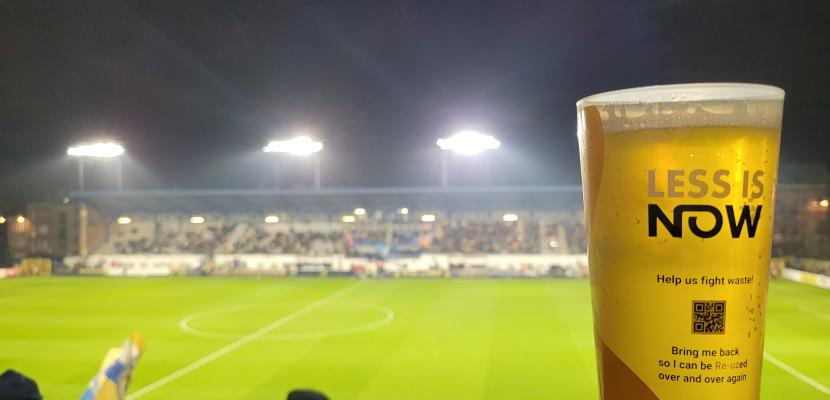
Reusable cups in large events

About this good practice
This general practice has the overall objective of contributing to less plastic waste produced in large events and thus easing the pressure of the event on the environment. Not only less waste is produced (what decreases the time of cleaning the venue, collecting waste and treating it) but it also decreases single use plastic production and thus the use of raw materials, and also encourages visitors to adopt eco-friendly behaviours. The principle sounds simple – with a purchase of a drink, the buyer leaves the bar with the drink and a reusable cup which should be returned upon finishing the drink or before getting a new one. However, for implementing a practice, we need to look at 3 key aspects: design, financial construction, and logistics – all of them define the success of the practice and determine some key monitoring requirements such as the return rate - how many cups were returned to the venue vs how many were taken home or damaged. The latter is normally taken as the Key Performance Indicator "return rate". Many schemes in order to be properly implemented with a high return rate require a financial dimension where a deposit is paid upon the first purchase of a drink and then reimbursed upon the return of the cup. Many solutions exist which complement this principle - cashless cards, exchange of cups at the bar, at special return points to lower the pressure on the bars, tokens and more.
Resources needed
A successful scheme needs to look at three key resources - available space for washing and storing the cups (unless externalised), human resources (increasing pressure on the bar vs deploying more people at return points) and the cups which can be obtained and purchased through a sponsorship.
Evidence of success
At the end of the Ireland – Scotland rugby game in Feb 2020, 52360 cups were returned to the washing facility, preventing up to 418.88 kg of plastic waste and a saving of 2 tonnes of CO2eq. In the month of Feb 2020, when the stadium hosted two matches with reusable cups the amount of mixed packaging waste decreased to 3.1 tonne from 4.54 t, 3.02 t and 3.96 t in Mar, Sep, and Nov 2019 and the dry mixed recycling rate increased to 17% from 14%, 10% and 14% during those same months, respectively.
Potential for learning or transfer
The replicability potential of reusable cups is obviously rather high as they are being deployed in more and more venues. The fact that an event is taking place in an enclosed space rather than in the countryside or the great outdoors, allows the system to have well-defined barriers. The issue certainly lies in the size of the venue and the available financial and human resources as reusable cups require attention in terms of distribution, collection and reverse charge, providing guidance and signage among others.
In terms of the environmental impact, what could determine the overall environmental impact and expected benefits are three key aspects – material the cup was made from, the number of uses, the use of water for washing, whether the venue can wash and store cups on site, and financially speaking what is the charge for unreturned cups.
Further information
Documents
ACCESS factsheet - REUSABLE CUPS FOR DRINKS.pdf
Website
Good practice owner
You can contact the good practice owner below for more detailed information.
